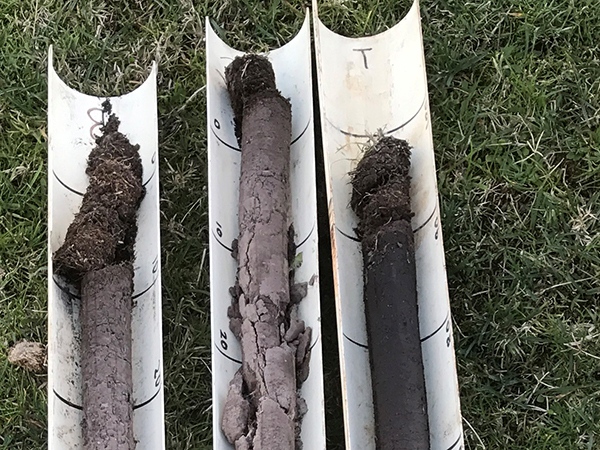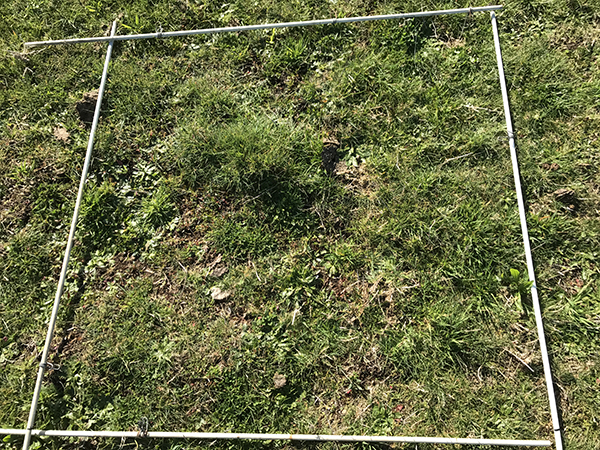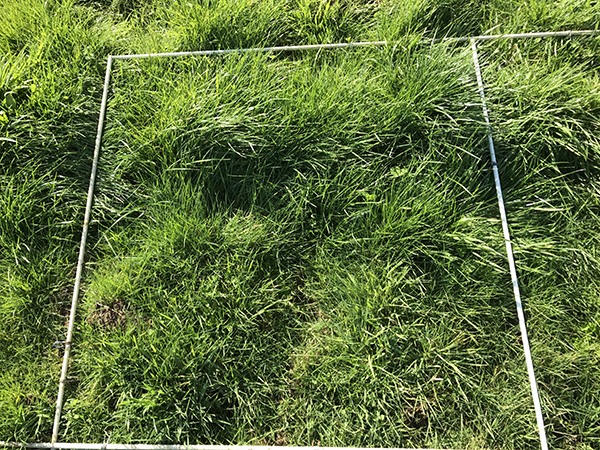Healthy soil benefits farms

Core samples taken in 2018 comparing (from L to R) the aerated, control and SoilKee strips.
For the West Gippsland Catchment Management Authority (WGCMA), helping improve farm productivity while reducing the impact on the environment is a key part of natural resource management.
WGCMA’s Healthy Soils Sustainable Farms project aims to educate and assist farmers to improve their soil management, particularly in terms of nutrients, plants and grazing practices. The project incorporated regular field days and events, mentoring programs, demonstration sites and discussion groups to support best practice and encourage innovation.
One of WGCMA’s most innovative demonstration sites involved the SoilKee, a unique machine developed in Gippsland, which aerates soil with minimal pasture disturbance. It simultaneously buries residual organic matter, top-dresses the pasture with soil and drills seed into the rows.
Between 2015 and 2018, a demonstration ran on Madeline Buckley and Ross Batten’s property in Buffalo. With an annual rainfall of 600 millimetres their pastures included rye grass, white clover and some strawberry clover. Some paddocks had a problem with bent grass and root mat.

The control strip at the SoilKee demonstration on Madeline Buckley and Ross Batten’s property in Buffalo in 2017.

The SoilKee strip at the same point.
For WGCMA project manager Tony Gardner, the demonstration was a chance to look at the effects of the SoilKee machine on soil health and production, and compare that with a regular approach to aerating pasture and a control.
“We know that increasing soil carbon is beneficial for managing pastures and that increased microbial activity and nutrient cycling can reduce fertiliser use and increase profitability,” Tony said. “A demonstration such as this one provides an opportunity to track progress and raise awareness of these issues over a three-year period.”
The SoilKee strips showed dramatic improvements in species, response to rainfall, pasture quality and dry yield matter.
The clover was bigger, there was evidence of worm castings and the land felt spongier underfoot.
According to Tony the results are exciting. “Soil tests showed an increase across all available nutrients,” he said. “There was an increase in cation exchange, pH levels, the calcium/magnesium ratio and a decrease in exchangeable aluminium.
Deep soil core samples showed a massive increase in soil carbon and a reduction in bulk density.
“The initial response from the seed sowing was poor, but it worked well on the third and fourth runs,” Tony said. “It was another indication that soil conditions had improved. What is exciting to us, as natural resource managers, is being able to trial a new technology that could have such a significant impact for farmers and the environment. This is an innovative machine that has a unique approach to increasing the carbon in the soil and incorporating organic matter. It helps farmers maintain their groundcover while improving pasture. It’s another method of pasture cropping, but rather than traditional methods of knocking pasture back with a herbicide to sow a crop, it actually stimulates pasture growth as well.”
Tony believes good soil management doesn’t just benefit the farm. “Improving pasture, animal health and the farm’s bottom line can reduce erosion, salinity, nutrient and chemical run-off, which impacts on the health of our waterways. Building soil carbon is a major initiative in mitigating greenhouse gases and is critical in improving water use efficiency,” he said.
The Healthy Soils Sustainable Farms project was delivered and supported by West Gippsland Catchment Management Authority through funding from the Australian Government’s National Landcare Program.



